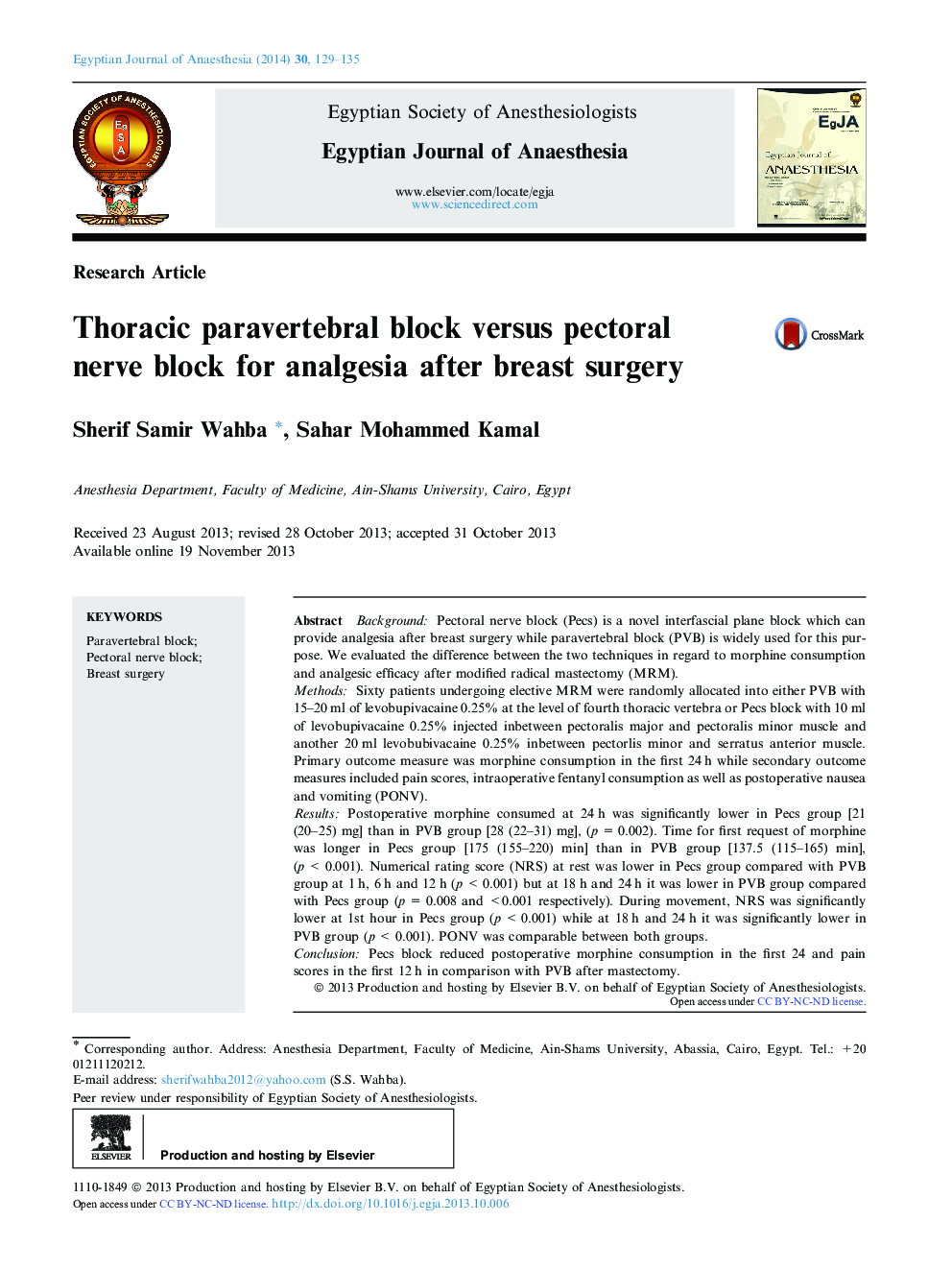| Article ID | Journal | Published Year | Pages | File Type |
|---|---|---|---|---|
| 2756315 | Egyptian Journal of Anaesthesia | 2014 | 7 Pages |
BackgroundPectoral nerve block (Pecs) is a novel interfascial plane block which can provide analgesia after breast surgery while paravertebral block (PVB) is widely used for this purpose. We evaluated the difference between the two techniques in regard to morphine consumption and analgesic efficacy after modified radical mastectomy (MRM).MethodsSixty patients undergoing elective MRM were randomly allocated into either PVB with 15–20 ml of levobupivacaine 0.25% at the level of fourth thoracic vertebra or Pecs block with 10 ml of levobupivacaine 0.25% injected inbetween pectoralis major and pectoralis minor muscle and another 20 ml levobubivacaine 0.25% inbetween pectorlis minor and serratus anterior muscle. Primary outcome measure was morphine consumption in the first 24 h while secondary outcome measures included pain scores, intraoperative fentanyl consumption as well as postoperative nausea and vomiting (PONV).ResultsPostoperative morphine consumed at 24 h was significantly lower in Pecs group [21 (20–25) mg] than in PVB group [28 (22–31) mg], (p = 0.002). Time for first request of morphine was longer in Pecs group [175 (155–220) min] than in PVB group [137.5 (115–165) min], (p < 0.001). Numerical rating score (NRS) at rest was lower in Pecs group compared with PVB group at 1 h, 6 h and 12 h (p < 0.001) but at 18 h and 24 h it was lower in PVB group compared with Pecs group (p = 0.008 and <0.001 respectively). During movement, NRS was significantly lower at 1st hour in Pecs group (p < 0.001) while at 18 h and 24 h it was significantly lower in PVB group (p < 0.001). PONV was comparable between both groups.ConclusionPecs block reduced postoperative morphine consumption in the first 24 and pain scores in the first 12 h in comparison with PVB after mastectomy.
